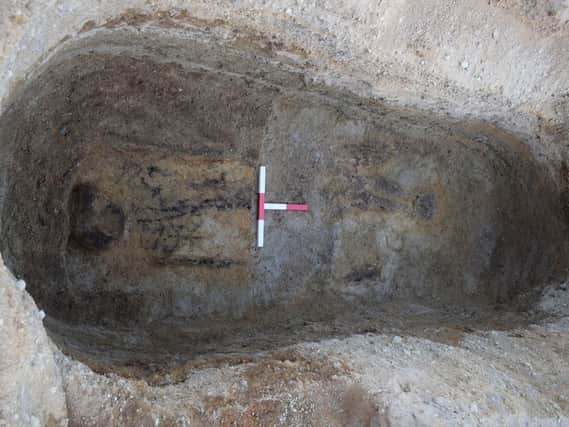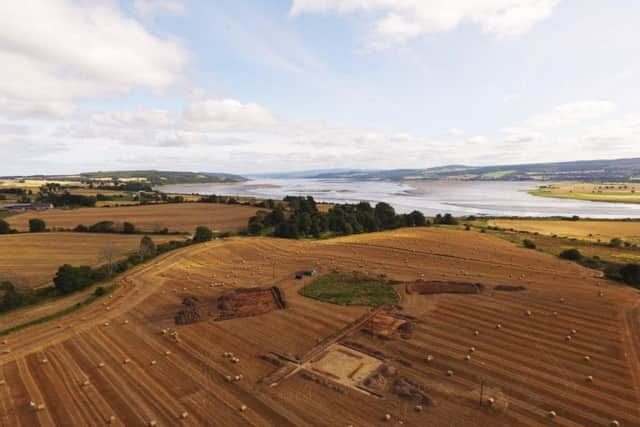Pictish human remains found in Highlands in "eureka moment" for archaeologist


The bones were found at the site of what is believed to be a Pictish-era cemetery near Muir of Ord on the Black Isle.
Archaeologists did not expect to find any human remains given the acidic properties of the soil at the site.
Advertisement
Hide AdAdvertisement
Hide AdBut Steven Birch, who led the excavation on behalf of the North of Scotland Archaeological Society (NOSAS) made the discovery on the final day of the dig.


Although the sex of the person buried may be hard to confirm, archaeologist said the remains may be that of the woman.
Mr Birch, the archaeological supervisor at the site, said he kept on working at one particular grave as he was “certain there had been something there".
He said: "After I found some blackened patches in the ground I decided to trowel back at that level and to my astonishment the ghostly outlines of a skeleton started to appear.
READ MORE:
"I was able to identify the spinal column with individual vertebrae, and then moving up the body I uncovered the upper arms and shoulders, all of which were just black stains in the ground.
"Moving carefully higher up I was able to locate the skull, which is better preserved although it had partly collapsed in on itself. I was able to find the legs and the feet, which appear to have been bound together before burial, and eventually almost the whole outline of the skeleton could be seen, surrounded by the faint shadow of a coffin”.
Mr Birch added: “I have been an archaeologist for a long time and have made some important discoveries but this was a real eureka moment for me.”
Archaeologists from NOSAS have spent two weeks at the site uncovering the outlines of barrows, the earthen mounds raised over ancient graves, after aerial photographs earlier suggested the presence of a burial ground.
Advertisement
Hide AdAdvertisement
Hide AdAlthough a number Pictish cemeteries have been discovered in northern Scotland over the last 30 or 40 years, only a handful of been excavated and bodies very rarely survive.
The significance of the current excavation in the Black Isle is that it is one of the largest Pictish cemeteries in Scotland and firmly placed within the old Pictish province of Fortriu.
The skeleton was found in one of the large square enclosures on the site.
"The Picts were a matrilineal society and it would not be unexpected to find a woman of high status buried in what would have been a very large and imposing barrow," a spokesman for NOSAS added.
Professor Gordon Noble of the University of Aberdeen, an advisor on the excavation, said: "Tarradale is one of the largest recorded Pictish barrow cemeteries.
"The Tarradale Through Time project has done a fantastic job of revealing and excavating part of the cemetery.
"The discovery of human remains within one of the barrows is a particularly exciting result for it may help date one monument of the cemetery and tell us more about the individual buried within the grave. Very few of these cemeteries have been excavated so projects like us have much to tell us about the ways in which the Picts buried their dead"
Dr Eric Grant, the leader of the archaeological project, said “It is a bit of a joke amongst archaeologists that the best finds always come on the last day, but it has been proved on many occasions.
"A few years ago the remains of a Pictish man was discovered in a cave at Rosemarkie, again on the last day of the dig.”
